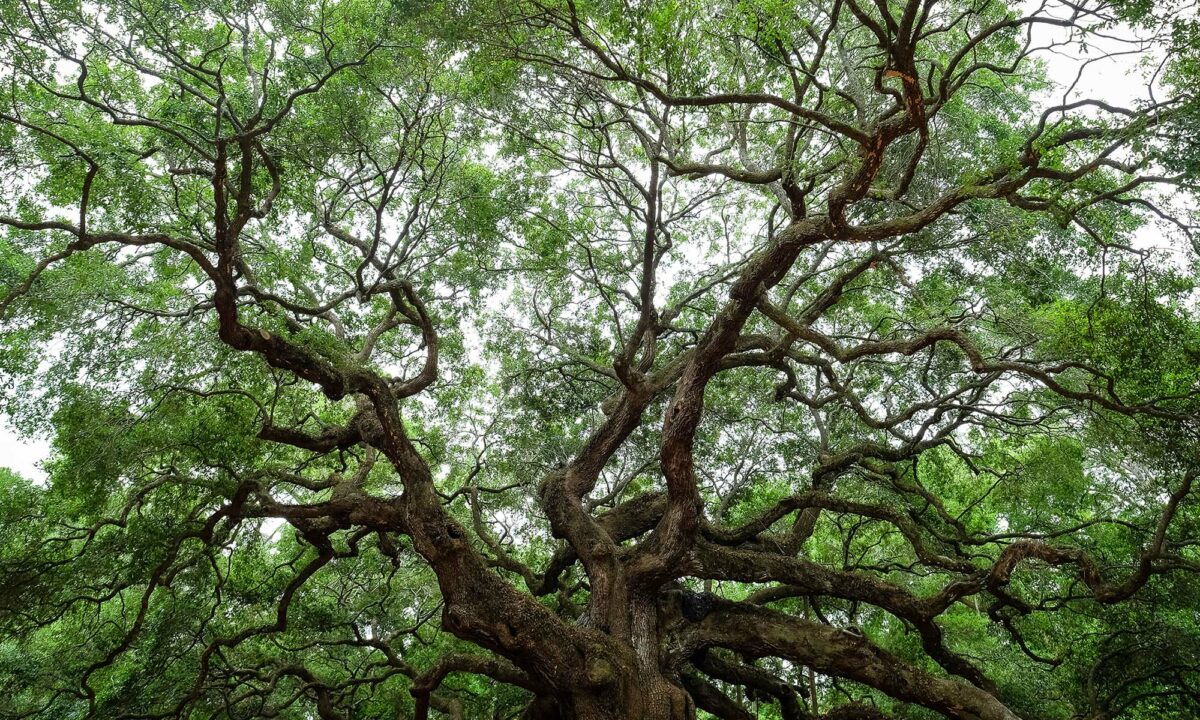South Carolina’s Lowcountry landscapes have intrigued tourists for years. Deep within this coastal region, salt marshes and other coastal habitats support diverse animal and plant life. One of these plants, the Angel Oak, has a sacred and complex history that captures the attention of people throughout the United States. Here’s what you should know about this famous tree.
The Angel Oak tree is a roughly 500-year-old Southern live oak (Quercus virginiana). Located on Johns Island near Charleston, South Carolina, the tree is a massive and striking landmark. While Southern live oaks are known for their sprawling branches, the Angel Oak still stands out for its incredible size. With branches measuring over 100 feet long, the tree has enjoyed local legend status in South Carolina for decades.

“People told their children about that tree,” Septima P. Clark, a South Carolina civil rights activist and educator, said in a 1980 interview. “It was sacred, and it is sacred to them.” According to Clark, the tree was never segregated. “We could go in and have our picnic lunch, spend the day, the children would play under the tree and then we would come back.”
Today, Angel Oak remains free and open to visitors. The tree still stands tall, despite damage from Hurricane Hugo in 1989. And, according to Allston McCrady, a contributing writer for Condé Nast Traveler, the site continues to provide visitors with a sense of “spirit-lifting awe.”
“The experience itself is a total immersion in nature,” McCrady wrote in a review, “which is surprising considering you pass gas stations and even a McDonalds right before the turnoff.”

What does the future hold for Angel Oak? Since the Lowcountry Land Trust (LLT) purchased the land in 2013, stewardship plans and improvements have been in the works. In 2022, the LTT announced the Angel Oak Preserve initiative, described as “a 10-year effort to unify an existing 9-acre city park with the surrounding 35 acres once threatened by insensitive development.”
As of 2023, the LTT is seeking feedback from community members on “near-final” designs for the preserve. Explore design renderings and stay updated on the project here.
